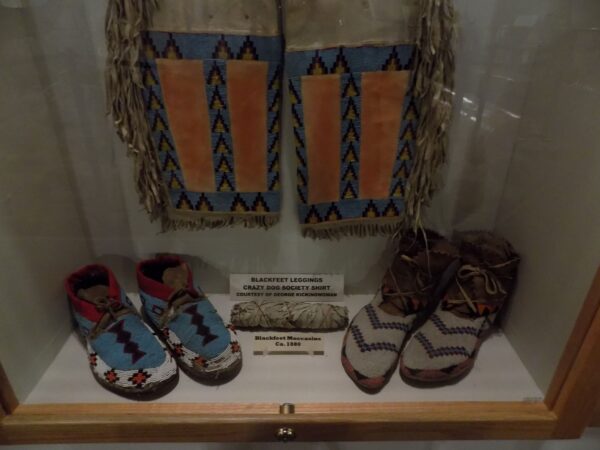An unplanned stop.
Looking at the photos in the Ewam Garden you can see that the morning had quite a hazy start. I didn’t know the severity of the problem but I did know that traveling mainly north but also a little west would only bring me closer to the source of the fires creating the haze. Knowing that I’d have to partly circumnavigate Glacier National Park from west to east and not knowing what I’d find when I arrived, I was in no particular rush to reach it. Also, there were two more places where I planned to stop between there and my current location.
The first was the Miracle of America Museum close to the southern end of Flathead Lake and the other was the Montana Vortex and House of Mystery in Columbia Falls. I anticipated needing a bit less than an hour to drive the 40 miles north on U S 93 to the first and a bit more than another hour to reach the second. At that point, I’d need to turn east and south on U S 2 for nearly 75 miles to reach the east side of the park and my final planned sightseeing stop on this trip.
I left Arlee and started on the road north. About 25 miles or so along the way, I saw this
and, since I was in no hurry, decided to stop. (The picture above is from the site rv123.com. Even over a mere 25 miles, the ash visible in the morning had thickened and I didn’t consider pausing to take an exterior photo.)
Stopping here was, as I said, a spontaneous decision and, since the museum’s literature states that the museum is named for “Chief Joseph Ninepipes, a Bitterroot Salish Chief” I assumed that, although the museum had a small display about him and his family, I could build a biography from research after I returned home. I was wrong. (I think the woman in the shop/admission area told me he came to be called Ninepipes because he always carried that many pipes into battles though navigating through my memory is a bit ash obscured on this point.)
All I’ve been able to learn is that this particular chief was, in truth, along with another man called Arlee, a sub-chief who lived in the mid to late nineteenth century. In fact, the loosely confederated tribes comprised primarily of Salish, Kootenai, and Pend d’Oreille was led by Little Grizzly Bear Claw commonly called Chief Charlo.
In 1872, under orders from President U S Grant, General (and soon to be President) James A Garfield forcibly “renegotiated” the 1855 Hell Gate Treaty in an attempt to force the tribes out of the Bitterroot Valley and on to the Flathead Reservation. Ninepipes and Arlee complied but Chief Charlo refused.
For nearly two decades, Charlo led a small group of resisters and continued to try to live in the Bitterroot Valley. Charlo, who had been baptized Charles, kept his people in the vicinity of the Saint Mary’s Mission founded by Father Pierre de Smet in 1841. However, with dwindling resources, he finally surrendered on 15 October 1891 leading his band of Salish to the Jocko Reservation.

According to the museum’s website,
The Ninepipes Museum of Early Montana was established in 1997 to discover, memorialize, preserve and protect the history and culture of the Flathead Reservation and early Montana. It is designed for the enrichment, education, and recreation of local residents and visitors.
Your trip through time begins with the Gallery of the Art of the Old West. You will see how noted artists, including Alfred Jacob Miller, Charlie Russell and E.S. Paxson, as well as later artists portrayed Native American and frontier life.
Indian artifacts are displayed in cases. The Hall of Photographs contains pictures of men and women who helped compose this history: Native Americans, trappers, miners, loggers, cowboys, ranchers, and settlers.
As you continue through the museum you will find a collection of weaponry including clubs, bows & arrows, and guns. There are spurs and saddlery, life-size mannequins in cowboy, cowgirl and Indian dress. You will see a grizzly trap, depicting the lost art of preparing a “grizzly set”. Throughout the museum is a vast collection of Native American beadwork.
The center of the building contains a life-size diorama of wild animals and an Indian camp scene that includes a creek, elk hide teepees, a woman scraping a buffalo hide, children playing, and a rack of drying meat. An old cabin, originally built by the Jocko River has been moved to the museum grounds.
I found it moderately interesting and took a number of photos. The nice woman at the desk gave me free admission when I told her it was my birthaversary.
Up next, a bunch of junk (or a miracle depending on your viewpoint), an ash impacted closure, and, at long last, my arrival at Glacier National Park.
